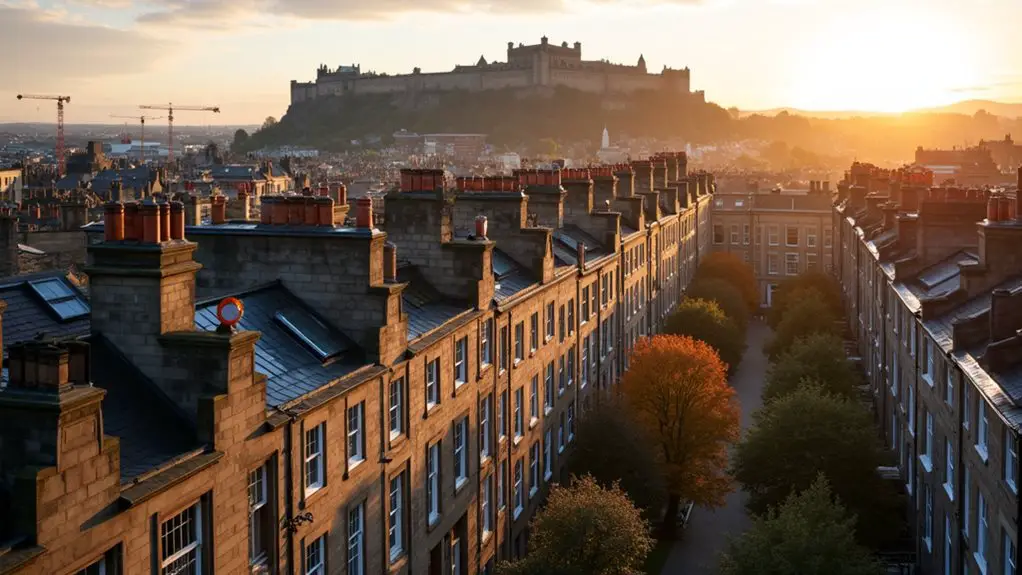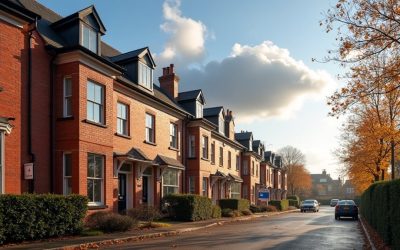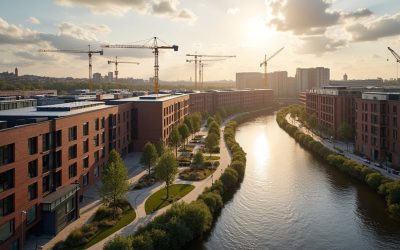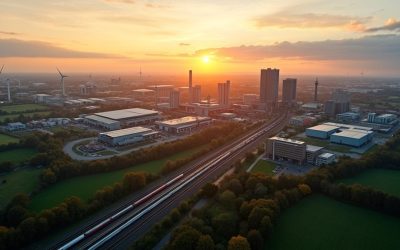Edinburgh’s property market has surged by £17,013 per home due to record investment levels, the city’s appeal as a top European tourism destination, and strong buyer demand that’s increased sales volumes by 7.8%. You’ll find properties now average £304,064, outpacing Scotland’s 4.6% growth with a robust 6% annual increase. The city’s unique blend of historical charm and modern features attracts both local and international purchasers, creating market resilience that defies broader UK economic pressures and uncertainty.

Edinburgh’s property market has experienced remarkable growth, with home values surging 6% year-on-year from March 2024 to March 2025. This increase translates to an average rise of £17,013 per property, bringing the city’s average home price to £304,064 for Q1 2025.
You’ll find that Edinburgh’s growth outpaces Scotland’s national average of 4.6%, which reached £185,939, while closely matching the UK’s 6.4% increase to £271,000. This performance demonstrates the city’s resilience despite broader economic pressures affecting the national market.
Several key factors drive Edinburgh’s property surge. The city benefits from record investment levels, increasing its overall attractiveness to buyers. Edinburgh’s status as a top European tourism destination boosts property desirability, while its blend of historical and modern features appeals to both local and international purchasers.
Market activity shows sustained buyer demand pushing prices upward. Sales volumes increased by 7.8% from February to April 2025, while new listings rose by 0.7% during the same period. However, you’ll notice that homes now take a median of 34 days to sell, four days longer than the previous year. Properties in Edinburgh’s west secured the highest premium, achieving 102.2% of Home Report valuation compared to other areas. The overall market demonstrates strength with properties selling at an average of 100.8% of valuation across the wider region.
Regional variations reveal notable differences across Edinburgh’s neighborhoods. North-West Edinburgh saw the most dramatic increase at 18.1%, reaching £309,287, while the City Centre rose 11.7% to £352,568. Properties achieved 101.0% of their Home Report valuation, with 17.8% going to closing date sales.
Affordability remains a consideration for first-time buyers. West Fife & Kinross offers the most accessible entry point at £217,517, showing only a modest 0.8% increase. Dunfermline provides budget-friendly options with one-bedroom flats at £89,813 and two-bedroom properties at £154,406.
The broader Edinburgh region, including Lothians, Fife, and Borders, averaged £285,684 for February through April 2025. East Fife led regional growth with a 13.8% annual rise, while West Lothian climbed 9.5% to £290,751.
Despite UK market uncertainty, Edinburgh’s property sector continues demonstrating robust performance. The combination of sustained demand, strategic investment, and the city’s unique appeal creates a strong foundation supporting continued value growth in Scotland’s capital.
Frequently Asked Questions
How Long Is This Edinburgh Property Price Surge Expected to Continue?
You can expect Edinburgh’s property price surge to continue through 2025, with forecasted growth of 2.5% to 5%.
The central projection shows 3% price increases this year, followed by stronger growth from 2026 onward.
You’ll see the market return to long-term trends of around 4% annual growth as economic performance improves.
Falling interest rates will gradually boost market confidence, though their full impact won’t manifest immediately as buyers adjust to new conditions.
Which Specific Edinburgh Neighborhoods Are Seeing the Highest Price Increases?
You’ll find North-West Edinburgh, including South Queensferry, leading with an 18.1% price increase to £309,287 average.
Edinburgh’s city centre follows closely with 11.7% growth, reaching £352,568 average prices.
West Lothian shows strong performance at 9.5% increase to £290,751.
These areas greatly outpace the citywide 6.8% average growth.
You’re seeing concentrated gains in premium locations with strong transport links and amenities driving buyer demand.
Are First-Time Buyers Being Priced Out of the Edinburgh Market?
You’re facing mixed signals in Edinburgh’s first-time buyer market.
While average asking prices hit £251,088 and overall prices rose 6.8%, you can still find affordable options.
One-bedroom flats in Gorgie saw 64.3% higher sales volumes, indicating strong first-time buyer activity.
However, improving mortgage rates aren’t offsetting price increases for many buyers.
You’ll find some affordable pockets remain available, but limited stock and rising prices risk pricing out certain buyers.
What Government Policies Might Affect Edinburgh’s Future Property Values?
You’ll face considerable impacts from several key government policies affecting Edinburgh’s property values.
Housing supply initiatives and planning restrictions will influence availability and pricing pressures.
Stamp duty changes and first-time buyer incentives directly affect demand levels.
Bank of England interest rate decisions shape mortgage affordability for buyers.
Energy efficiency regulations and building standards will impact construction costs and property marketability, particularly affecting older homes requiring upgrades.
How Do Edinburgh Rental Yields Compare to Property Purchase Prices?
You’ll find Edinburgh’s rental yields ranging from 4% to 6%, with central areas offering 6% or higher.
With average property prices at £339,000 and monthly rents around £1,376, you’re looking at annual rental income of approximately £16,512.
This creates favorable investment conditions since Edinburgh’s yields typically exceed the UK’s 4% average.
You’ll benefit from stable rental returns despite rising purchase prices, making the market attractive for property investment.


